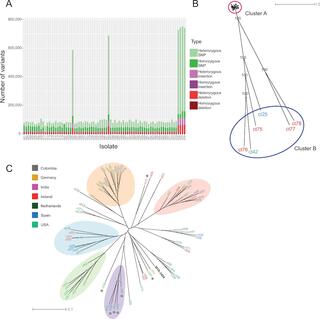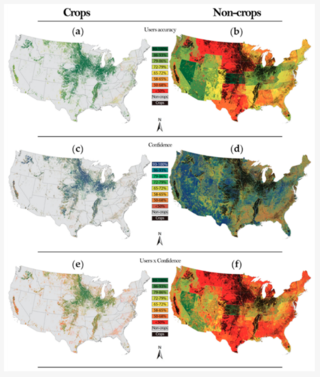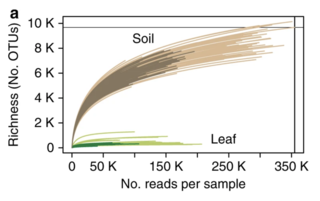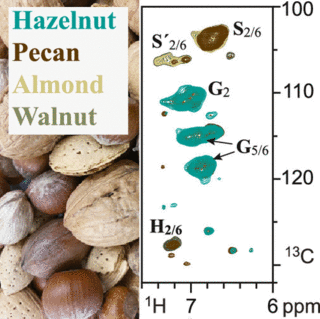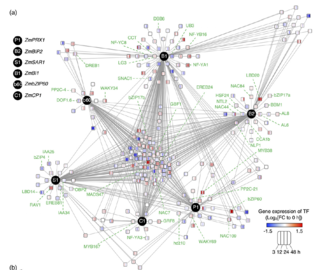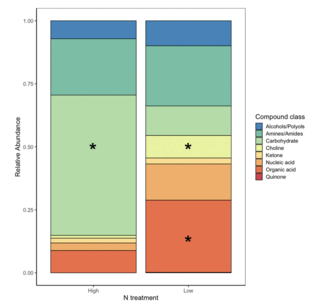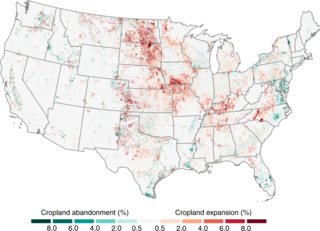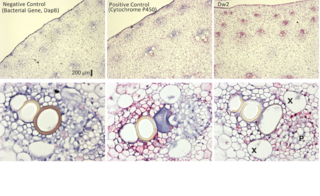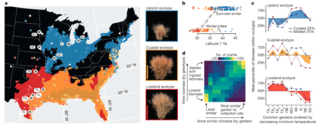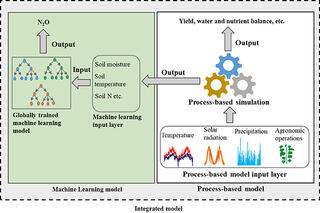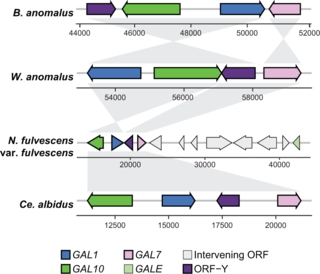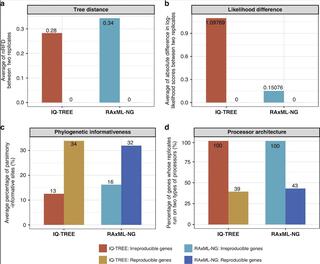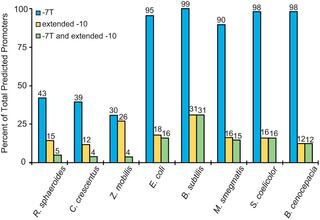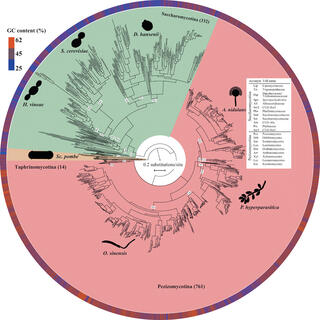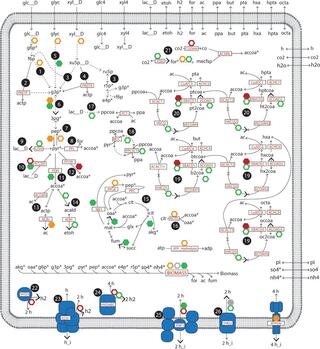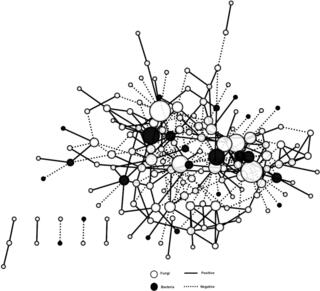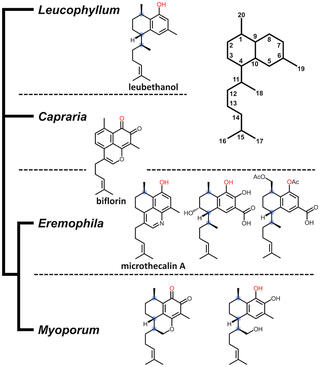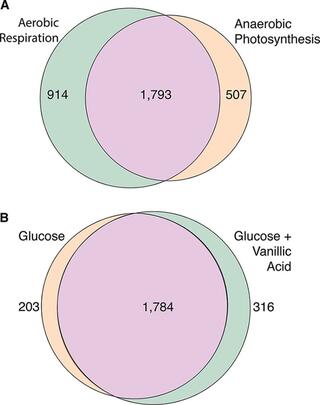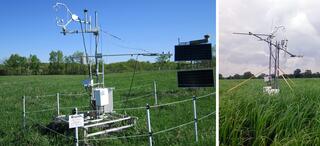GLBRC Data Sets
Highlighted below are a variety of published studies that include data sets that might be of interest to the scientific community and have been deposited in online data repositories. Only data sets published in GLBRC-approved repositories following the FAIR Guiding Principles are highlighted. More information can be found on our guidelines page.
Population genomics of the pathogenic yeast Candida tropicalis identifies hybrid isolates in environmental samples
C.E. O’Brien et al. "Population genomics of the pathogenic yeast Candida tropicalis identifies hybrid isolates in environmental samples" PLoS Pathogens 17, 3 (2021) [DOI: 10.1371/journal.ppat.1009138]
By carrying out a phylogenomic analysis of 77 isolates, we find that C. tropicalis genomes range from very homozygous to highly heterozygous. We show that the heterozygous isolates are hybrids, most likely formed by mating between different parents.
Accuracy, Bias, and Improvements in Mapping Crops and Cropland across the United States Using the USDA Cropland Data Layer
T. Lark et al. "Accuracy, bias, and improvements in mapping crops and cropland across the United States using the USDA Cropland Data Layer" Remote Sensing 15, 5 (2021) [DOI: 10.3390/rs13050968]
We used state- and land cover class-specific accuracy statistics from the USDA from 2008 to 2016 to comprehensively characterize the performance of the CDL across space and time. We estimated nationwide area-weighted accuracies for the CDL for specific crops as well as for the aggregated classes of cropland and non-cropland.
Assembly and seasonality of core phyllosphere microbiota on perennial biofuel crops
K.L. Grady et al. "Assembly and seasonality of core phyllosphere microbiota on perennial biofuel crops" Nature Communications 10, 4135 (2019) [DOI:10.1038/s41467-019-11974-4]
Here, we characterize the 16S rRNA gene diversity and seasonal assembly of bacterial and archaeal microbiomes of two perennial cellulosic feedstocks, switchgrass (Panicum virgatum L.) and miscanthus (Miscanthus x giganteus).
Quantifying and correcting for pre-assay CO2 loss in short-term carbon mineralization assays
M. Belanger et al. “Quantifying and correcting for pre-assay CO2 loss in short-term carbon mineralization assays” SOIL 11, 4295 (2020) [DOI: 10.5194/soil-2020-55]
Soils can lose carbon (C) as they dry and, if soil samples vary in moisture content at sampling, differential C loss during the pre-assay dry-down period may complicate the assay’s interpretations. We examined the impact of pre-assay CO2 loss in a long-cultivated agricultural soil at initial moisture contents of 30 %, 50 %, and 70 % water-filled pore space (WFPS).
Eudicot Nutshells: Cell-Wall Composition and Biofuel Feedstock Potential
L. Landucci et al. “Eudicot Nutshells: Cell-Wall Composition and Biofuel Feedstock Potential” ACS Sustainable Chemistry and Engineering 34, 12 (2020) [DOI: 10.1021/acs.energyfuels.0c03131]
In the context of understanding the general character of phylogenetically diverse eudicot species, we provide a chemical analysis of the lignin in the shells of commonly eaten nuts and detail the chemical composition of their lignins.
A temporal hierarchy underpins the transcription factor–DNA interactome of the maize UPR
D.K. Ko et al. “A temporal hierarchy underpins the transcription factor-DNA interactome of the maize UPR” The Plant journal 105, 1 (2020) [DOI: 10.1111/tpj.15044]
We performed a large-scale systems-level analysis of the protein-DNA interaction (PDI) network in maize (Zea mays). Using 23 promoter fragments of six UPR marker genes in a high-throughput enhanced yeast one-hybrid assay, we identified a highly interconnected network of 262 transcription factors (TFs) associated with significant biological traits and 831 PDIs underlying the UPR.
Switchgrass Rhizosphere Metabolite Chemistry Driven by Nitrogen Availability
D.N. Smercina et al. “Switchgrass rhizosphere metabolite chemistry driven by nitrogen availability” Phytobiomes 5, 1 (2020) [DOI: 10.1094/PBIOMES-09-19-0055-FI]
It is not known how or if switchgrass responds to diazotrophs or their activity. To explore this question, we assessed rhizosphere metabolite chemistry of switchgrass grown in a hydroponic system under two N levels and under inoculated or uninoculated conditions.
Cropland expansion in the United States produces marginal yields at high costs to wildlife
T. Lark et al. “Cropland expansion in the United States produces marginal yields at high costs to wildlife” Nature Communications 11, 4295 (2020) [DOI: 10.1038/s41467-020-18045-z]
Here we assess annual land use change 2008–16 and its impacts on crop yields and wildlife habitat. We find that croplands have expanded at a rate of over one million acres per year, and that 69.5% of new cropland areas produced yields below the national average, with a mean yield deficit of 6.5%.
The AGCVIII kinase Dw2 modulates cell proliferation, endomembrane trafficking, and MLG/xylan cell wall localization in elongating stem internodes of Sorghum bicolor
J. Oliver et al. “The AGCVIII kinase Dw2 modulates cell proliferation, endomembrane trafficking, and MLG/xylan cell wall localization in elongating stem internodes of Sorghum bicolor” The plant journal (2020) [DOI: 10.111/tpl.15086]
Here we provide evidence that mutation of Dw2 reduces cell proliferation in internode intercalary meristems, inhibits endocytosis, and alters the distribution of heteroxylan and mixed linkage glucan in cell walls.
Genomic mechanisms of climate adaptation in polyploid bioenergy switchgrass
J.T. Lovell et al. “Genomic mechanisms of climate adaptation in polyploid bioenergy switchgrass” Nature 590 (2021) [DOI: 10.1038/s41586-020-03127-1]
Here we present the assembly and annotation of the large and complex genome of the polyploid bioenergy crop switchgrass (Panicum virgatum). Analysis of biomass and survival among 732 resequenced genotypes, which were grown across 10 common gardens that span 1,800 km of latitude, jointly revealed extensive genomic evidence of climate adaptation.
Machine learning improves predictions of agricultural nitrous oxide emissions from intensively managed cropping systems
D. Saha et al. “Machine learning improves predictions of agricultural nitrous oxide (N2O) emissions from intensively managed cropping systems” Environmental Research Letters 16, 2 (2020) [DOI: 10.1088/1748-9326/abd2f3]
Here we show the promise for machine learning (ML) to significantly improve field-level flux predictions, especially when coupled with a cropping systems model to simulate unmeasured parameters.
Repeated horizontal gene transfer of GALactose metabolism genes violates Dollo’s law of irreversible loss
M.A.B. Haase et al. “Repeated horizontal gene transfer of GALactose metabolism genes violates Dollo’s law of irreversible loss” Genetics 217, 2 (2020) [DOI: 10.1093/genetics/iyaa012]
Here, through phylogenomic analyses, we reconstructed the evolutionary history of the yeast galactose utilization pathway and observed widespread and repeated losses of the ability to utilize galactose, which occurred concurrently with the losses of GALactose (GAL) utilization genes.
Widespread irreproducibility in phylogenetics
X. Shen et al. “Widespread irreproducibility in phylogenetics” Nature Communications 11, 6096 (2020) [DOI: 10.1038/s41467-020-20005-6]
Phylogenetic trees are essential for studying biology, but their reproducibility under identical parameter settings remains unexplored. Here, we find that 3515 (18.11%) IQ-TREE-inferred and 1813 (9.34%) RAxML-NG-inferred maximum likelihood (ML) gene trees are topologically irreproducible.
A majority of Rhodobacter sphaeroides promoters lack a crucial RNA polymerase recognition feature, enabling coordinated transcription activation
K.K. Henry et al. “A majority of Rhodobacter sphaeroides promoters lack a crucial RNA polymerase recognition feature, enabling coordinated transcription activation” PNAS 117, 47 (2020) [DOI: 10.1073/pnas.2010087117]
Bacterial promoters are often predicted by similarity to the Escherichia coli −10 and −35 consensus elements. Although these elements are highly conserved in diverse bacterial phyla, only 30 to 43% of promoters we analyzed from Rhodobacter sphaeroides and two other α-proteobacteria contained −7T.
Genome-scale phylogeny and contrasting modes of genome evolution in the fungal phylum Ascomycota
X. Shen et al. “Genome-scale phylogeny and contrasting modes of genome evolution in the fungal phylum Ascomycota” Science Advances 6, 45 (2020) [DOI: 10.1126/sciadv.abd0079]
By examining 1107 genomes from Saccharomycotina (332), Pezizomycotina (761), and Taphrinomycotina (14) species, we inferred a robust genome-wide phylogeny that resolves several contentious relationships and estimated that the Ascomycota last common ancestor likely originated in the Ediacaran period.
Diagnosing and predicting mixed culture fermentations with unicellular and guild-based metabolic models
M.J. Scarborough et al. “Diagnosing and predicting mixed culture fermentations with unicellular and guild-based metabolic models” mSystems 5, 5 (2020) [DOI: 10.1128/mSystems.00755-20]
Predicting behavior of self-assembled or synthetic microbiomes, however, remains a challenge. In this work, we used unicellular and guild-based metabolic models to investigate the production of medium-chain fatty acids by a mixed microbial community that is fed multiple organic substrates.
Seasonal dynamics of core fungi and bacterial networks in the switchgrass phyllosphere.
A.W. Bowsher et al. “Seasonal dynamics of core fungi and bacterial networks in the switchgrass phyllosphere” Phytobiomes journal 104 (2020) [DOI: 10.1094/PBIOMES-07-20-0051-R]
Here, we investigated seasonal dynamics of epiphytic phyllosphere fungal communities in switchgrass (Panicum virgatum L.), a focal bioenergy crop. We also leverage previously published data on switchgrass phyllosphere bacterial communities from the same experimental plants, allowing us to compare fungal and bacterial dynamics and explore interdomain network associations in the switchgrass phyllosphere.
The biosynthesis of the anti‐microbial diterpenoid leubethanol in Leucophyllum frutescens proceeds via an all‐cis prenyl intermediate
G. P. Miller et al. “The biosynthesis of the anti‐microbial diterpenoid leubethanol in Leucophyllum frutescens proceeds via an all‐cis prenyl intermediate.” The plant journal for cell and molecular biology 104 (2020) [DOI: 10.1111/tpj.14957]
Here we leverage the simple product profile and high accumulation of leubethanol in the roots of L. frutescens and compare tissue‐specific transcriptomes with existing data from Eremophila serrulata to decipher the biosynthesis of leubethanol.
Genome-wide identification of transcription start sites in two Alphaproteobacteria
K. Myers et al. “Genome-Wide Identification of Transcription Start Sites in Two Alphaproteobacteria, Rhodobacter sphaeroides and Novosphingobium aromaticivorans.” Microbiology Resource Announcements 9, 36 (2020) [DOI: 10.1128/MRA.00880-20]
Here we report the genome-wide identification of transcription start sites (TSSs) from two alphaproteobacteria grown under conditions that result in significant changes in gene expression.
GLBRC energy balance measurements
Chen Jiquan, Robertson Phil, Abraha Michael
AmeriFlux is a network of sites measuring ecosystem CO2, water, and energy fluxes in North, Central, and South America supported by the U.S. Department of Energy's Office of Biological and Environmental Research.
